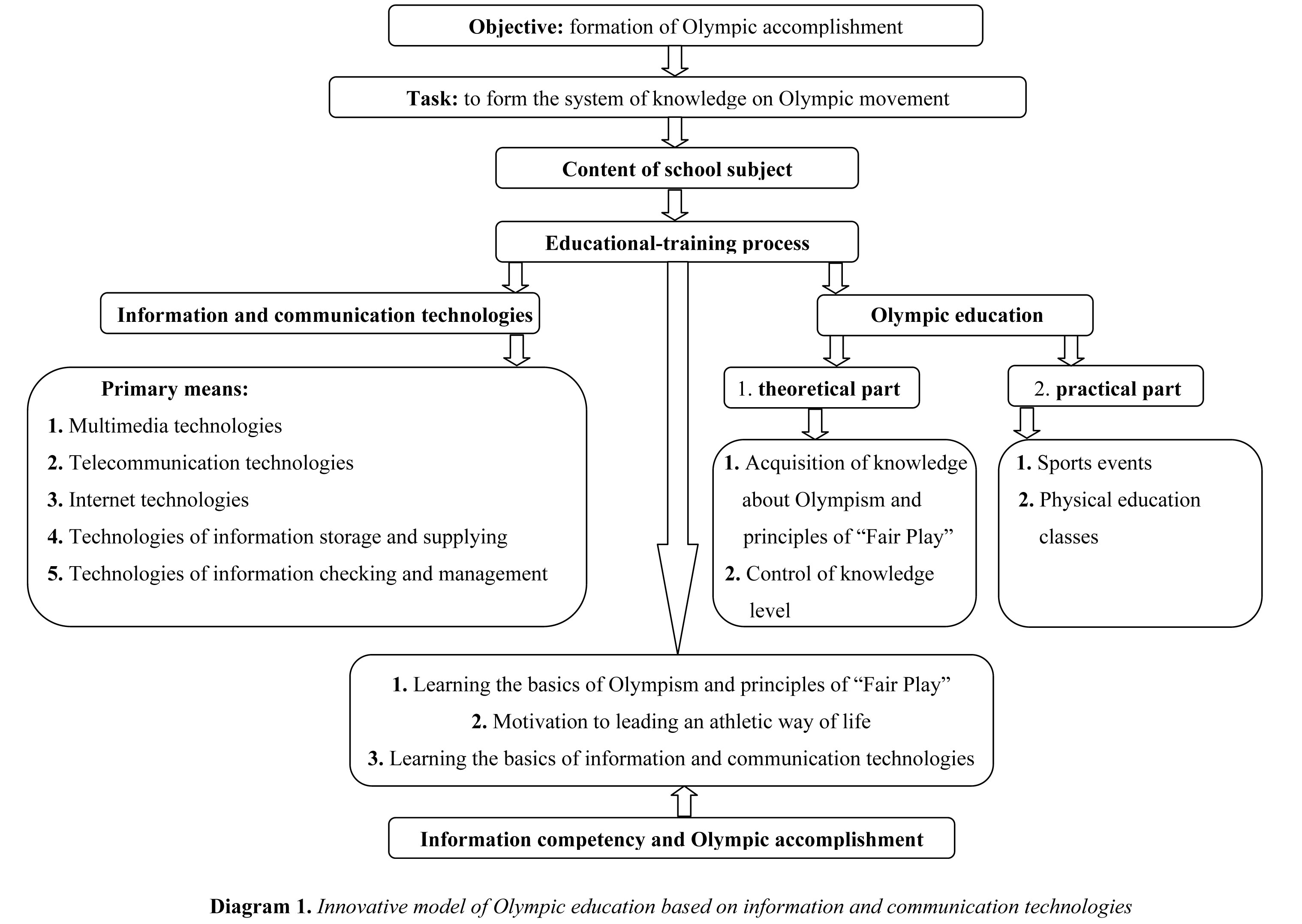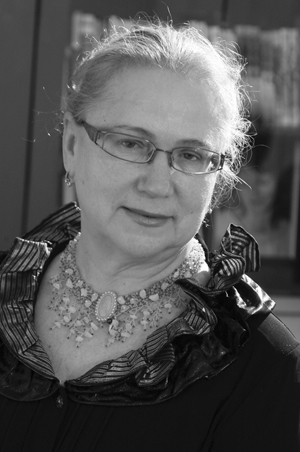Innovative Model of Olympic Education of Primary Schoolchildren Based on Information Communication Technologies
Фотографии:
ˑ:
L.I. Lubysheva, professor, Dr.Hab.
Russian State University of Physical Culture, Sport and Tourism (SCOLIPC), Moscow
R.A. Abramov, postgraduate student
Surgut State University, Surgut
Key words: humanization, Olympic ideals, training, educational process, schoolchildren.
Introduction. In the time of drastic alterations taking place in our country, it became necessary to search for new, unconventional, sources of education that would be focused on humanization of modern society. The main task of social humanization is to introduce young people into common cultural values – moral, ethical, spiritual, aesthetic, intellectual values, etc.
In order to accomplish the objective of humanization of society, merely new content is not enough –new forms and methods of work with schoolchildren are required. First and foremost, this refers to the necessity to arouse schoolchildren’s interest, make them active partners in the training process, subjects of development of own personalities, many-sided individuals with a harmoniously developed psycho-physical structure. Only the program and the means acknowledged and approved by young people, which excite common interest can serve as the impulses, that induce them to cooperation in their training. Among such means are sports and social activities that are interesting for most of modern young people.
Taking into account this state of things, new trends in organization of physical and sports work in schools are being actively searched, which would meet modern requirements and help solve a number of socio-educational problems of the system of primary education and physical culture and sports movement in today’s Russia.
Owing to the established problem situation, more attention is being paid to Olympic education in school. However, the researches carried out in the recent years revealed significant difficulties in the practical solution of the problems of Olympic education of schoolchildren - formation of their system of knowledge about the Olympic movement and their introduction into the ideals and values of Olympism. So now the problem of enhancement of this activity by seeking new forms, methods, techniques of its implementation and innovative approaches to its organization comes to the forefront.
The current priorities for development of school education define a new strategy of social development, based on knowledge and high technologies. The application of information technologies will help solve many problems and resolve the difficulties of this system of education, making the learning process more accessible and attractive.
The purpose of the study was to design and validate the model of Olympic education for primary schoolchildren on the basis of information and communication technologies.
Organization of research. The educational experiment was conducted at the premises of the Municipal Budgetary General Education Institution Secondary School №13 of KhMAR-Yugra, Surgut, since 2011 till 2013. At the initial stage of the experiment, the testing and questionnaire survey on the topic “Pupils’ attitude to physical education and sports classes and knowledge about Olympism” were conducted in the 2nd forms. The experimental and control groups consisted of the children from the general and preparatory medical groups. In the control group the classes were given according to the traditional physical education program, 3 times a week. In the experimental group the children studied according to the developed Olympic education program with the use of information technologies. The time conditions in the experimental group were the same. Two classes were dedicated for learning the basic component, and one class was allowed for the variative component. The basic component consisted in the fulfillment of the compulsory educational standard (basic education, track and field athletics, gymnastics, action games, skiing), the variative one – learning the basics of Olympic education with the use of information technologies.
Results and discussion. During the analysis and synthesis of the scientific literature, the theoretical pre-conditions for the development of the model of Olympic education with the use of information and communication technologies in primary school age were determined. The model of Olympic education is focused on introducing children into the ideals and values of Olympism. The designed model was meant to make the Olympic education activities in primary school more effective due thanks to the use of information and communication technologies (Diagram ).

The proposed model enables to integrate information and communication technologies into the Olympic education process, which contributes, on the one hand, to an increase of the schoolchildren’s interest in learning the values of Olympism, and on the other – to the efficient formation of information and communication competencies. During training, we tested and endorsed multimedia, telecommunication and internet technologies intended to enhance the educational process, cognitive activity of schoolchildren, intersubject communications, communication skills, aesthetic education, develop information culture and information selection and processing abilities of schoolchildren.
The Olympic education included in its structure theoretical, practical and control parts.
The theoretical part comprised the material for acquisition of knowledge about Olympism and the “Fair Play” principles.
The practical part involved physical training and competitive activities. Effective assimilation of this part affected the following indicators:
- increase of the number of children engaged in physical culture and sport;
- formation of the values of healthy lifestyle culture in children;
- decrease of incidence among schoolchildren;
- improved knowledge of schoolchildren, stipulated by Olympic education;
- the rise of the level of physical, psychological and mental health of children.
Among other criteria of successful implementation of the model of the structure and organization of Olympic education are the improvement of information competency and Olympic accomplishment of schoolchildren.
Conclusion. Thanks to the proposed model for the organization of Olympic education with the use of information technologies in primary school age the conditions of attractiveness and accessibility of classes of physical education and information science were created. Now pupils can master the values of Olympic culture and form the need for regular physical education and sports occupations.
References
- Atanasov, Zh. Olympic movement and teaching moral-aesthetic attitude to sport / Zh. Atanasov / / Problems of the Olympic movement: Collected papers in Russian (Ed. by A. Solakov). – VOK, Sofia Press, 1977. – P. 125–138. (In Russian)
- Barinova, I.V. The state and the ways to improve Olympic education and training of young students: Ph.D. thesis / S.O. Pavlov. – Moscow, 1994. (In Russian)
- Pavlov, S.O. Information support of Olympics / S.O. Pavlov // Book of abstracts of universities of South of Russia. - Krasnodar, 1999. – P. 96–98. (In Russian)
- Fedorov, M.E., Kruzhkov, D.A. Information technologies in the Olympic movement: Proceedings of the session of young scientists and students / M.E. Fedorov, D.A. Kruzhkov. – Moscow, 2004. – P. 34–38. (In Russian)
Corresponding author: fizkult@teoriya.ru



 Журнал "THEORY AND PRACTICE
Журнал "THEORY AND PRACTICE